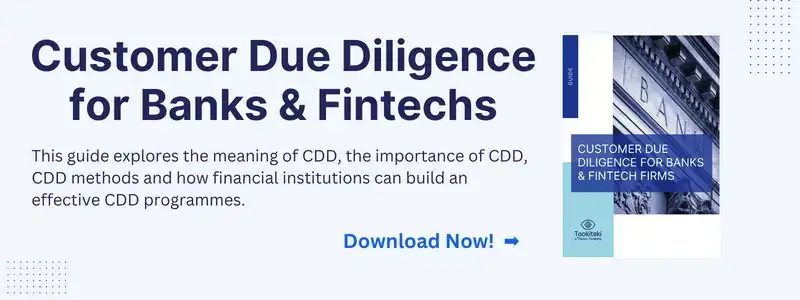Ongoing monitoring is a crucial aspect of any business, especially in industries that are highly regulated, such as finance and healthcare. It involves continuously reviewing and assessing data to identify any potential risks or issues that may arise. In this article, we will discuss the best practices for ongoing monitoring processes and how they can benefit your business.
What is Ongoing Monitoring?
Ongoing monitoring is the process of regularly reviewing and assessing your business operations to ensure compliance with regulations, identify potential risks, and make necessary adjustments to mitigate those risks. It involves actively monitoring your business activities, transactions, and relationships to ensure they align with your company's policies and procedures.
The Importance of Ongoing Monitoring in AML Compliance
One area where ongoing monitoring is crucial is in anti-money laundering (AML) compliance. AML regulations require businesses to have robust monitoring systems in place to detect and prevent money laundering and other financial crimes. Ongoing monitoring is a key component of these systems, as it allows businesses to identify suspicious activities and report them to the appropriate authorities.
Without ongoing monitoring, businesses may miss red flags and fail to comply with AML regulations, which can result in hefty fines and reputational damage. By actively monitoring their operations, businesses can stay ahead of potential risks and maintain compliance with AML regulations.
Active Monitoring vs. Reactive Monitoring
There are two types of monitoring: active and reactive. Active monitoring involves regularly reviewing and assessing your business operations, while reactive monitoring only occurs after an issue or risk has been identified. While reactive monitoring is better than no monitoring at all, it's not as effective as active monitoring.
Active monitoring allows businesses to identify and address potential risks before they become major issues. It also helps businesses stay compliant with regulations and maintain a good reputation. On the other hand, reactive monitoring can lead to costly fines, damage to your brand's reputation, and even legal consequences.
Benefits of Ongoing Monitoring
Now that we understand what ongoing monitoring is and why it's important, let's explore some of the benefits it can bring to your business.
Early Detection of Risks
One of the most significant benefits of ongoing monitoring is the early detection of risks. By actively monitoring your business operations, you can identify potential risks before they become major issues. This allows you to take proactive measures to mitigate those risks and prevent them from causing harm to your business.
Compliance with Regulations
As mentioned earlier, ongoing monitoring is crucial for compliance with regulations, especially in industries such as finance and healthcare. By actively monitoring your operations, you can ensure that your business is following all necessary regulations and avoid costly fines and legal consequences.
Improved Decision Making
Ongoing monitoring provides businesses with valuable insights into their operations, allowing them to make more informed decisions. By regularly reviewing and assessing their activities, businesses can identify areas for improvement and make necessary adjustments to optimize their operations.
Enhanced Reputation and Trust
In today's digital age, trust and reputation are more important than ever. By actively monitoring your operations and staying compliant with regulations, you can build trust with your customers and stakeholders. This can lead to increased customer loyalty and a positive reputation in your industry.
Best Practices for Ongoing Monitoring Processes
Now that we understand the importance of ongoing monitoring, let's discuss some best practices that businesses should follow to ensure effective and efficient monitoring processes.
Establish Clear Objectives and Goals
Before implementing an ongoing monitoring process, it is essential to establish clear objectives and goals. This will help guide your monitoring efforts and ensure that you are focusing on the most critical areas. For example, if your business is in the finance industry, your objectives may include identifying potential money laundering activities or ensuring compliance with anti-money laundering (AML) regulations.
Utilize Technology
Technology plays a crucial role in ongoing monitoring processes. It allows businesses to collect, analyze, and report on data in a more efficient and accurate manner. There are various tools and software available that can help with ongoing monitoring, such as data analytics platforms, risk management software, and compliance monitoring tools. It is essential to invest in the right technology for your business to ensure effective ongoing monitoring.
Conduct Regular Reviews
Regular reviews are a crucial aspect of ongoing monitoring. It is recommended to conduct reviews at least once a year, but depending on your industry and business, more frequent reviews may be necessary. These reviews should include a thorough analysis of your data, identification of any potential risks or issues, and a plan to address them.
Stay Up-to-Date with Regulations
In highly regulated industries, such as finance and healthcare, regulations are constantly changing. It is crucial to stay up-to-date with these regulations and ensure that your ongoing monitoring processes are compliant. Failure to comply with regulations can result in severe consequences, including fines and damage to your business's reputation.
Train Employees
Ongoing monitoring is not just the responsibility of one department or team; it involves the entire organization. It is essential to train all employees on the importance of ongoing monitoring and their role in the process. This will help create a culture of compliance within the organization and ensure that everyone is working towards the same goal.
Document Everything
Documentation is crucial in ongoing monitoring processes. It is essential to keep a record of all reviews, findings, and actions taken to address any issues. This documentation can serve as evidence of your compliance efforts in case of an audit or investigation.
Conduct Risk Assessments
Risk assessments are an essential part of ongoing monitoring processes. They help identify potential risks and vulnerabilities within your business and allow you to take proactive measures to address them. It is recommended to conduct risk assessments regularly, especially when there are changes in regulations or your business operations.
Collaborate with Other Departments
Ongoing monitoring involves collaboration between various departments, such as compliance, risk management, and IT. It is crucial to establish clear communication and collaboration between these departments to ensure that all areas are covered and any potential risks are identified and addressed.
Continuously Improve
Ongoing monitoring is an ongoing process, and it is essential to continuously improve and adapt your processes. This can include implementing new technology, updating policies and procedures, and conducting regular training for employees. By continuously improving your ongoing monitoring processes, you can stay ahead of any potential risks and ensure compliance with regulations.
Real-World Examples of Ongoing Monitoring
The finance industry is highly regulated, and ongoing monitoring is crucial for compliance. One example of effective ongoing monitoring is the use of transaction monitoring software by banks and financial institutions. This software continuously analyzes customer transactions and flags any suspicious activity, such as potential money laundering or fraud.
Another example is in the healthcare industry, where ongoing monitoring is essential for compliance with HIPAA regulations. Healthcare organizations use technology, such as electronic health records and data analytics, to continuously monitor patient data and ensure compliance with privacy regulations.
Who is Responsible for Ongoing Monitoring?
Ongoing monitoring is a team effort and involves collaboration between various departments. However, the compliance department typically takes the lead in ongoing monitoring processes. They are responsible for establishing policies and procedures, conducting risk assessments, and ensuring that the organization is compliant with regulations.
Takeaways
In conclusion, ongoing monitoring is a critical component of risk management and compliance for businesses, especially in highly regulated industries like finance and healthcare. By following best practices, such as establishing clear objectives, utilizing technology, and conducting regular reviews, businesses can stay ahead of potential risks and ensure compliance with regulations.
Toolkitaki's FinCense is a cutting-edge solution that can greatly enhance ongoing monitoring processes, providing valuable insights and helping businesses make more informed decisions. By investing in innovative tools like FinCense and implementing the best practices outlined in this blog post, businesses can effectively mitigate risks, maintain compliance, and build trust with customers and stakeholders. Stay proactive, stay compliant, and stay ahead with ongoing monitoring using solutions like FinCense from Toolkitaki.
Anti-Financial Crime Compliance with Tookitaki?





